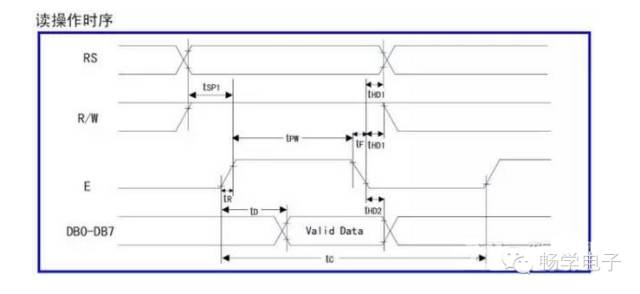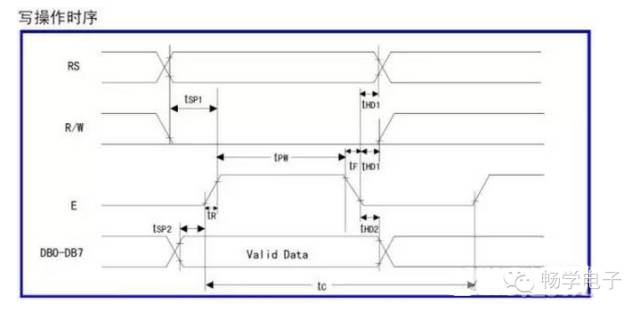
There are only two operations for the 1602: reading and writing. Reading can be divided into reading status (status register) and reading data (from RAM), while writing can be divided into writing instructions and writing data (to RAM). All operation timing needs to follow the table below.

During usage, I encountered a situation where nothing was displayed after initialization. After debugging, I summarized some precautions. Before listing these precautions, I will provide the read and write timing diagrams, as shown below:


After providing the two diagrams, I can explain the precautions:
1) Observe the timing diagram. Read and write operations occur when the enable pin E is high. This duration should not be too short; if the time for E is too short, it may lead to read/write failures. In my usage, I pulled E high and then delayed for about 500 microseconds before pulling E low. Of course, different manufacturers’ 1602 LCD modules may vary; this is just a precaution. The RS and RW pins can be pulled high or low with a single instruction, no delay is needed.
2) Before writing data, set the data pointer address by writing the instruction (80H + address code). After setting the address pointer, you can start writing data (after writing, the pointer automatically increments or decrements, depending on the instruction used to set the mode).

